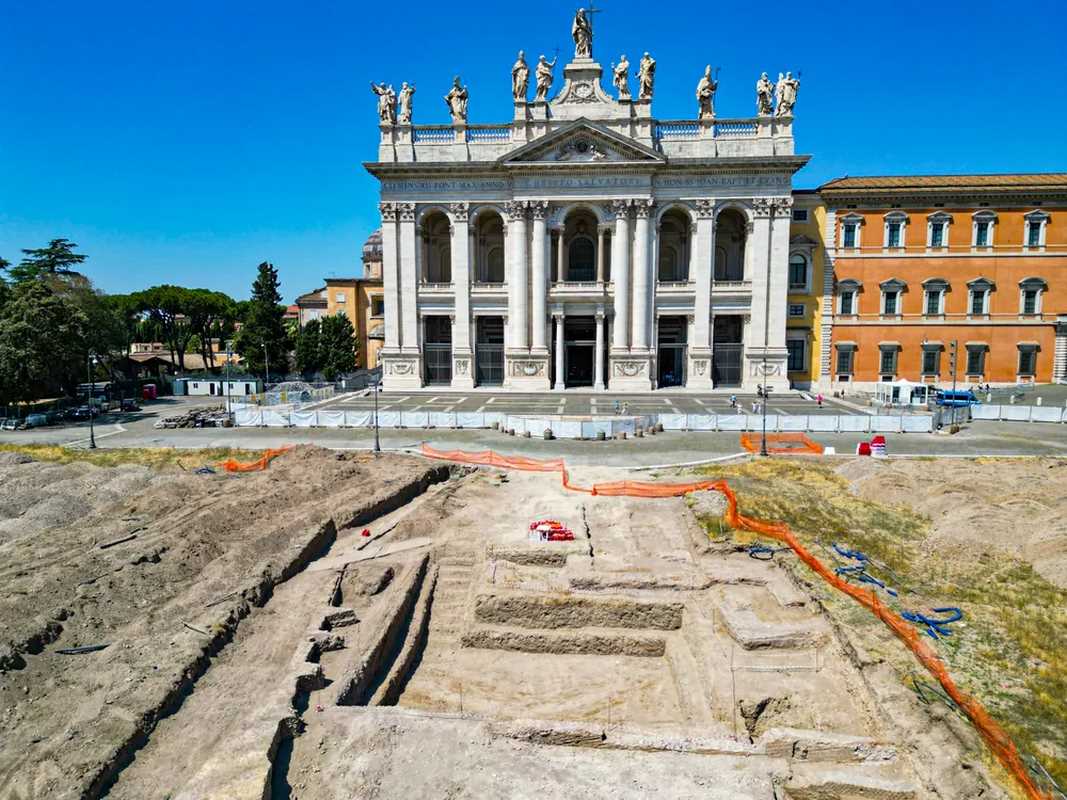A significant archaeological discovery was recently made in Rome, where road construction led to the unearthing of the ancient center of the Catholic Papacy – the Patriarchio. This palace of Papal authority dates back to the late Roman Empire and is a testament to Christianity’s historical roots in Rome.
The excavations revealed defensive walls believed to have guarded the Patriarchio, located in the heart of Rome. The site, known as the Lateran Palace, was completed in 313 following Emperor Constantine’s Edict of Milan, which endorsed Christian religious tolerance across the Empire.
Gennaro Sangiulliano from the Italian Ministry of Culture expressed his excitement over this significant find. “This is an extraordinarily important find for Rome and its medieval history, as no extensive archaeological excavations have ever been conducted in the square in modern times,” he said. Sangiulliano added that every stone tells a story, and these discoveries will provide invaluable insights into our past.
The Lateran Palace served as the seat of the papacy until it moved briefly to Avignon, France. Over time, the palace complex expanded but was left in disrepair due to fires and earthquakes by the time the Papacy returned to Rome. The defensive walls were eventually ordered to be demolished, and Pope Gregory XI relocated the palace to its current location at the Vatican.
In the 16th century, Pope Sixtus VI decided to restore the palace. Today, it blends seamlessly into Rome’s historic cityscape with three surviving monuments – the Scala Santa and the Chapel of the Sancta Sanctorum – integrated into a building constructed by Domenico Fontana in 1589 opposite St. John Lateran.
These ongoing excavations are part of a major renovation project for the Jubilee, a year-long pilgrimage event scheduled for 2025 in Rome. This event is expected to attract around 30 million visitors from around the world.
This fascinating discovery offers a glimpse into Rome’s rich history and the evolution of the Catholic Church. It serves as a reminder of the city’s enduring legacy as a center of culture, religion, and history. Share this exciting news with your friends who have visited or plan to visit Rome.
Remember to keep an eye on further archaeological updates from this site, as each new finding will continue to add to our understanding of Rome’s past.
Source: Good News Network





Leave a Comment